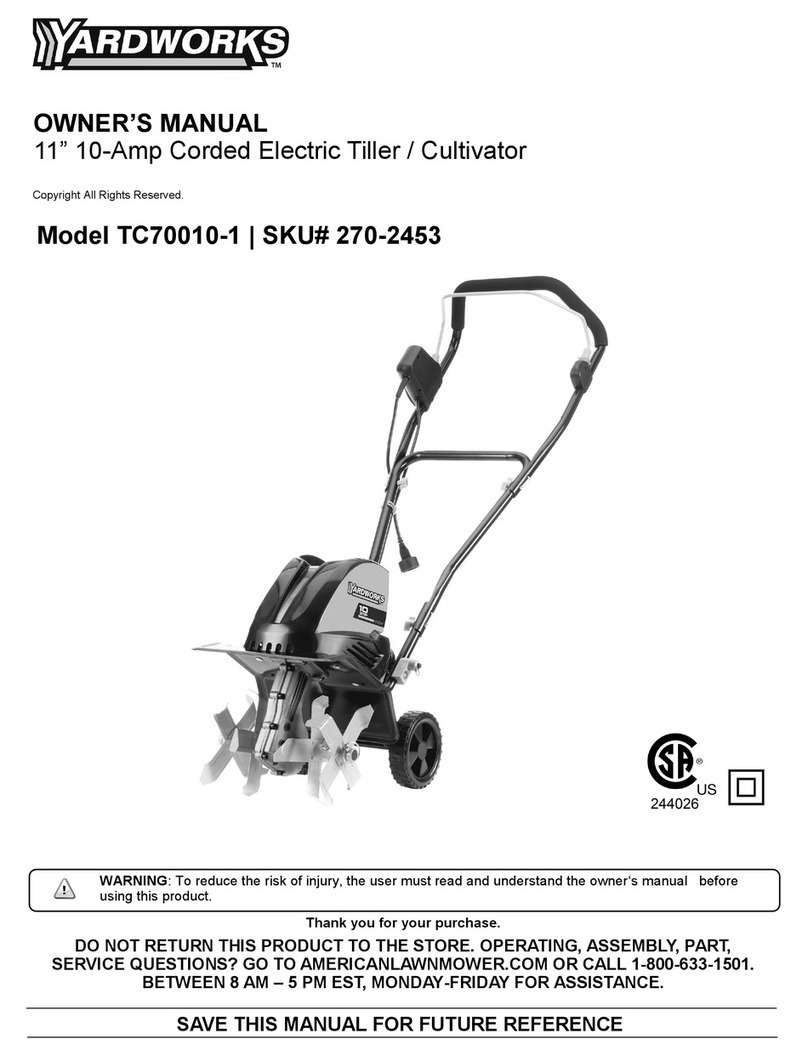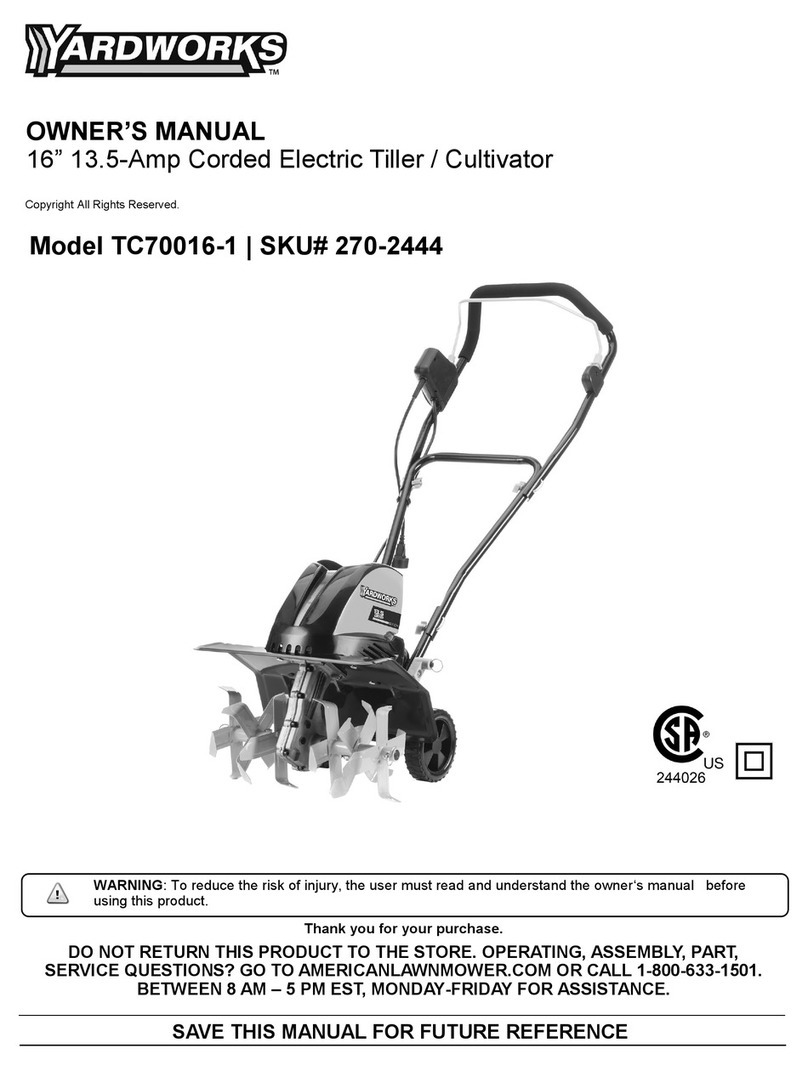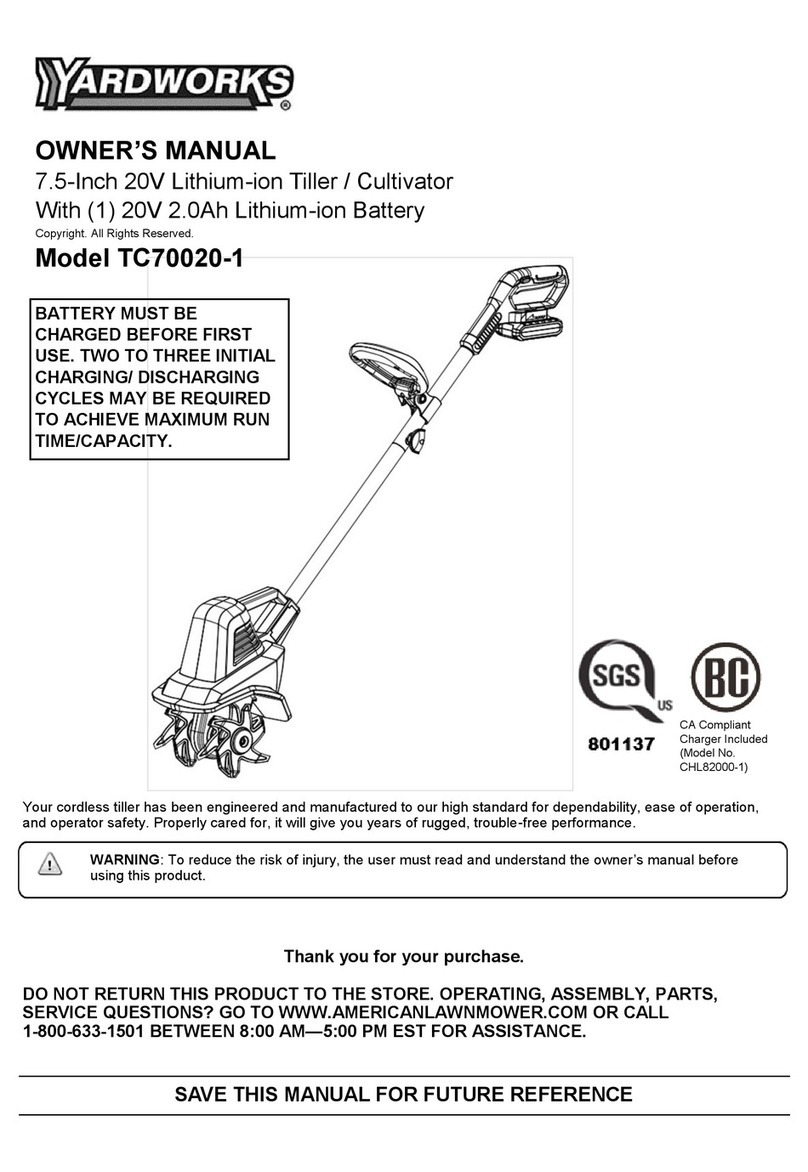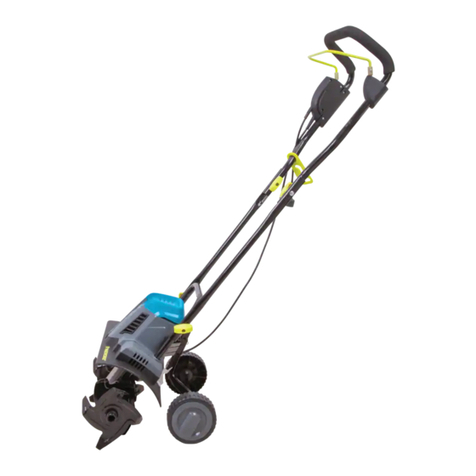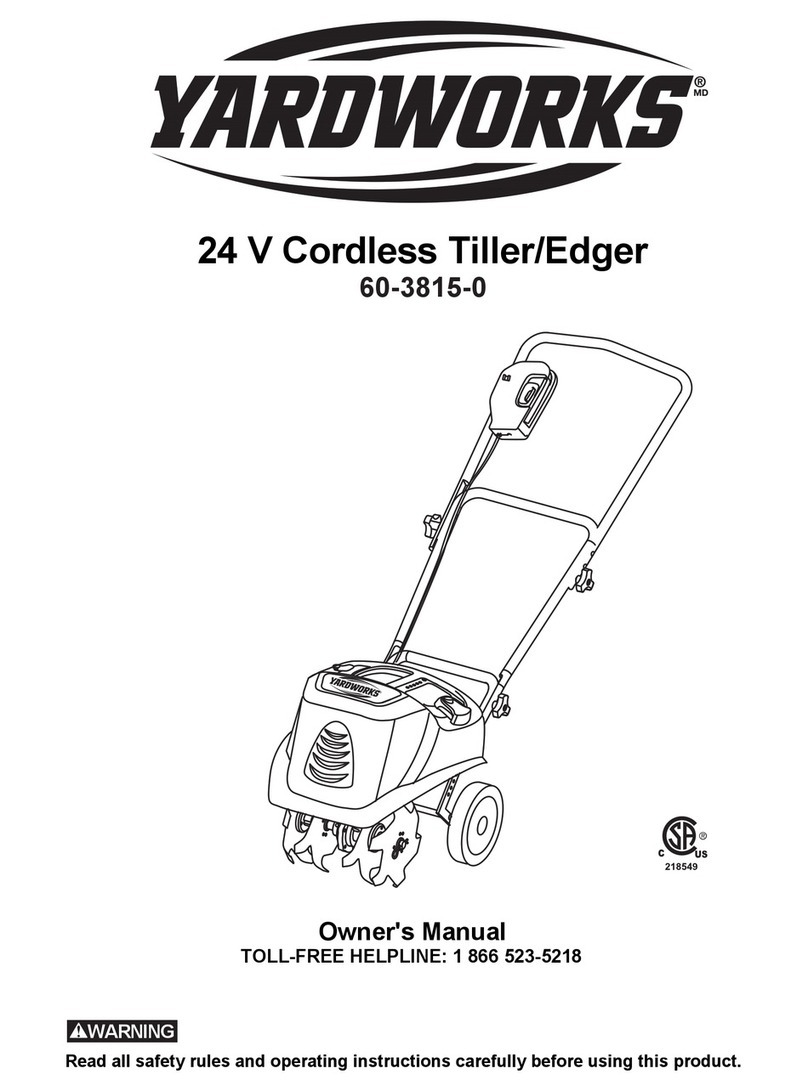
3
WARNING: READ AND UNDERSTAND ALL INSTRUCTIONS. Failure to follow all
instructions listed below may result in electric shock, fire, and/or serious personal injury.
General Safety Rules
READ THESE INSTRUCTIONS CAREFULLLY
•Read the Owner’s manual carefully. Become thoroughly familiar with the controls and the
proper use of the equipment. Know how to stop the tiller and disengage the controls quickly.
•Do not operate a power tool in an explosive atmosphere, such as in the presence of flammable
liquids, gases, or dust. Power tools create sparks that may ignite the dust or fumes.
•Double insulated tools are equipped with a polarized plug (one blade is wider than the other).
This plug will only fit into a polarized outlet one way. If the plug does not fit into the outlet,
reverse the plug. If it still does not fit, have a proper polarized outlet installed by a qualified
electrician. Do not alter the plug in any way. Double insulation eliminates the need for the
three-wire grounded power cord and grounded power supply system.
•Avoid coming into contact with grounded surfaces such as pipes, radiators, ranges, and
refrigerators. There is an increased risk of electric shock if operator's body is grounded.
•Don’t expose power tools to rain or wet conditions. Water entering a power tool increasesthe
risk of electric shock.
• Do not abuse the cord. Do not use the cord to carry a tools, and do not pull on it in order to discon-
nect the plug from an outlet. Keep the cord away from heat, oil, sharp edges, and moving parts.
Replace a damaged cord immediately. A damaged cord increases the risk of electric shock.
•Use only outdoor extension cords marked “W-A” or “W.” These cords are rated for outdoor use,
and reduce the risk of electric shock.
•Never allow children to operate this tool. Do not allow adults to operate this tool without proper
instruction. Always wear safety glasses equipped with side shields. Everyday glasses only have
impact resistant lenses. They are NOT safety glasses. Following this rule will reduce the risk of
eye injury.
•Wear long pants made from a heavy material, boots, and gloves. Avoid loose garments or
jewellery that can get caught in moving parts of the tiller or the motor.
• Do not operate this tool while barefoot or wearing sandals or similar light weight footwear. Wear
protective footwear that will keep your feet safe and improve your footing on slippery surfaces.
•Secure long hair so that it is above shoulder, in order to prevent it from getting caught in
moving parts.
• Do not operate the tiller while under the influence of alcohol or drugs.
• Do not put hands or feet near or under tines.
• Exercise caution in order to avoid slipping or falling.
• Avoid accidental starting. Verify that the switch trigger is not engaged before plugging in the tool.
• Never pick up or carry the tiller while the tines are turning or while the motor is running.
• Keep the tool in good working condition.
•Frequently check all nuts, bolts, and screws for proper tightness in order to ensure that the tool
is in safe working condition.
• Keep the tiller free of grass, leaves, or grease in order to reduce the risk of a fire.
•Do not use tool if switch does not turn it on or off. Any tool that cannot be controlled with the
switch is dangerous and must be repaired.
•Disconnect the plug from outlet before making any adjustments, changing accessories, or
storing the tool. Following these preventive safety measures reduces the risk of starting the tool
accidentally.






